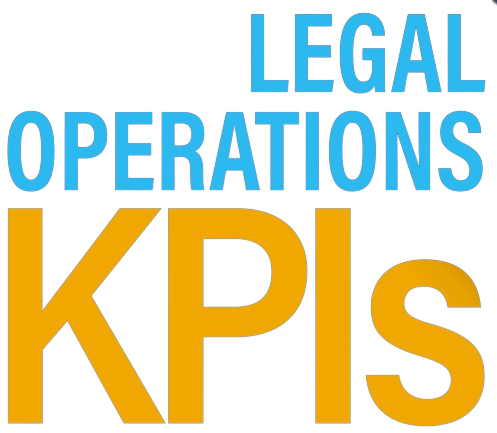Bienvenido(a) a






Por Michelle Kovitch
This is me, my wheels turning, which I'm sure many of you can relate to that. But when I finished Mori's chapter on compliance and risk management, the second to the last chapter, my wheels just kept turning and turning and turning. And I kept thinking about things that I want to share with y'all today. But this chapter is around compliance and risk management. We have one more chapter to go after this. But I walked away feeling first of all like I needed to set some goals, which I'm goal oriented. So for me that works. So who doesn't like to set goals? That was the first thing.
The second thing was this section. Even though it's relatively small compared to some of the other sections, it had so many more things in it that I hadn't thought about before. So, for example, KPIs involving legal risks that have been identified but not mitigated. KPIs around missed legal deadlines. Okay, that one may have made me lose a night's sleep. Just bringing a level of anxiety to the table. Then there was KPIs for proactive legal advice that's provided. So think about it. Our legal teams offer valuable guidance to the business all of the time. Is that even being captured?
And then one of the things I thought about was we really work in a culture in our industry where we're more reactive. But I feel like once the enterprise determines which KPIs are valuable in monitoring, that ultimately you're shifting to a proactive culture because you're trying to get ahead of it. And then I started thinking, okay, and honestly, I'm looking for feedback on all of this. If you are being true to the business, the data that you're gathering, the reporting needs to be honest reporting. And I feel like in order to get there, the reporting needs to become second nature to the business. In other words, it doesn't need to be this, oh, surprise thing. We're going to start gathering information around this. It needs to be something that's done continuously and matter of fact. Like I said, second nature.
And then I started thinking, okay, if you are putting all the work in and you're gathering information and you're identifying those KPIs, and you're running the filters and you're identifying the trends, good or bad, if they're favorable or if they're unfavorable, then I started wondering, okay, what are you doing with it then? Because honestly, unless you do something with it, are we really bringing it full circle? So I'm really interested in the spirit of knowledge sharing as a community what your thoughts are on this.
Then the next chapter is going to be on best practices. That will be next week. It'll be our final chapter. I don't know. What are we going to do after that? I have to think of something else. But anyway, I'm looking forward to hearing from all of you. I hope you have a great week. Thanks so much.
Este soy yo, mis ruedas girando, que estoy seguro de que muchos de ustedes pueden identificarse con eso. Pero cuando terminé el capítulo de Mori sobre cumplimiento y gestión de riesgos, el penúltimo capítulo, mis ruedas no paraban de girar y girar y girar. Y seguí pensando en cosas que quiero compartir con todos ustedes hoy. Pero este capítulo gira en torno al cumplimiento y la gestión de riesgos. Nos queda un capítulo más después de este. Pero me fui sintiendo, en primer lugar como si necesitara fijar algunas metas, que estoy orientado a las metas. Así que para mí eso funciona. ¿A quién no le gusta fijarse objetivos? Eso fue lo primero.
Lo segundo era esta sección. Aunque es relativamente pequeña en comparación con otras secciones, tenía muchas más cosas en las que no había pensado antes. Así, por ejemplo, Indicadores clave de rendimiento relativos a riesgos jurídicos identificados pero no mitigados. Indicadores clave de rendimiento en torno al incumplimiento de los plazos legales. Vale, puede que esa me haya hecho perder una noche de sueño. Sólo trae un nivel de ansiedad a la mesa. Luego hubo KPI para el asesoramiento jurídico proactivo que se presta. Así que piénsalo. Nuestros equipos jurídicos ofrecen siempre una valiosa orientación a las empresas. ¿Está siendo capturado?
Y entonces una de las cosas que pensé es que en nuestro sector trabajamos en una cultura en la que somos más reactivos. Pero siento que una vez que la empresa determina qué indicadores clave de rendimiento son valiosos para el seguimiento, que en última instancia está cambiar a una cultura proactiva porque intentas adelantarte a ella. Y entonces empecé a pensar, vale, y honestamente, estoy buscando opiniones sobre todo esto. Si eres fiel al negocio, los datos que se recopilan, la información debe ser honesta. Y siento que para llegar allí, los informes deben convertirse en algo natural para la empresa. En otras palabras, no tiene por qué ser una cosa sorpresa. Vamos a empezar a reunir información al respecto. Tiene que ser algo que se haga continuamente y con naturalidad. Como dije, una segunda naturaleza.
Y entonces empecé a pensar, vale, si estás poniendo todo el trabajo y estás recopilando información y se identifican esos KPI, y se ejecutan los filtros y se identificar las tendencias, buenas o malas, si son favorables o si son desfavorable, entonces empecé a preguntarme, vale, ¿qué haces con ella entonces? Porque honestamente, a menos que hagas algo con ella, ¿estamos realmente cerrando el círculo? Así que estoy realmente interesado en el espíritu de compartir conocimientos como comunidad, ¿qué opina al respecto?
El siguiente capítulo tratará de las mejores prácticas. Será la semana que viene. Será nuestro capítulo final. No lo sé. ¿Qué vamos a hacer después? Tengo que pensar en otra cosa. Pero en cualquier caso, estoy deseando escucharos a todos. Espero que tengas una gran semana. Muchas gracias.
Para acceder al contenido completo de este y otros videos, por favor, tómate un momento para regístrate o inicia sesión.